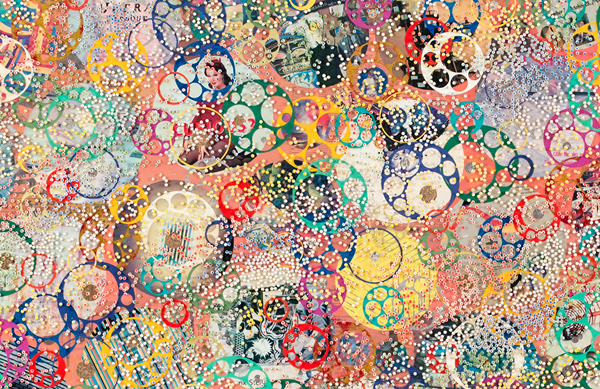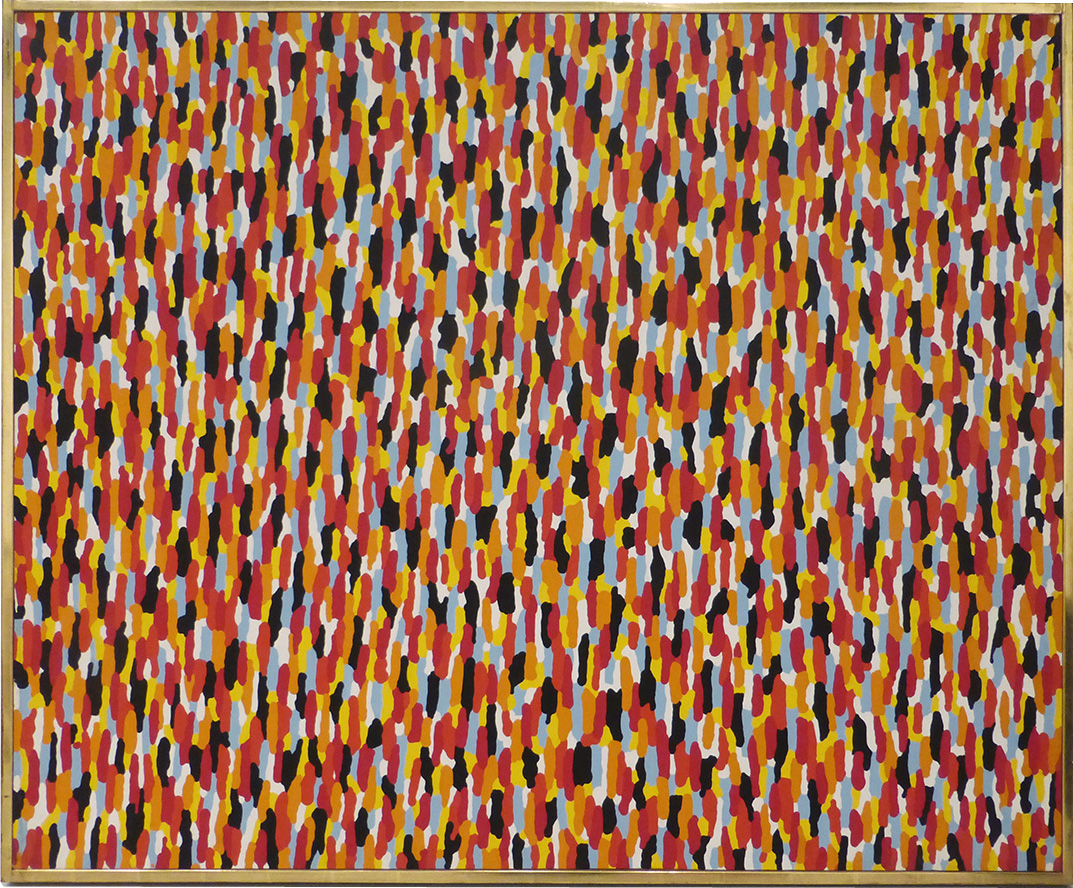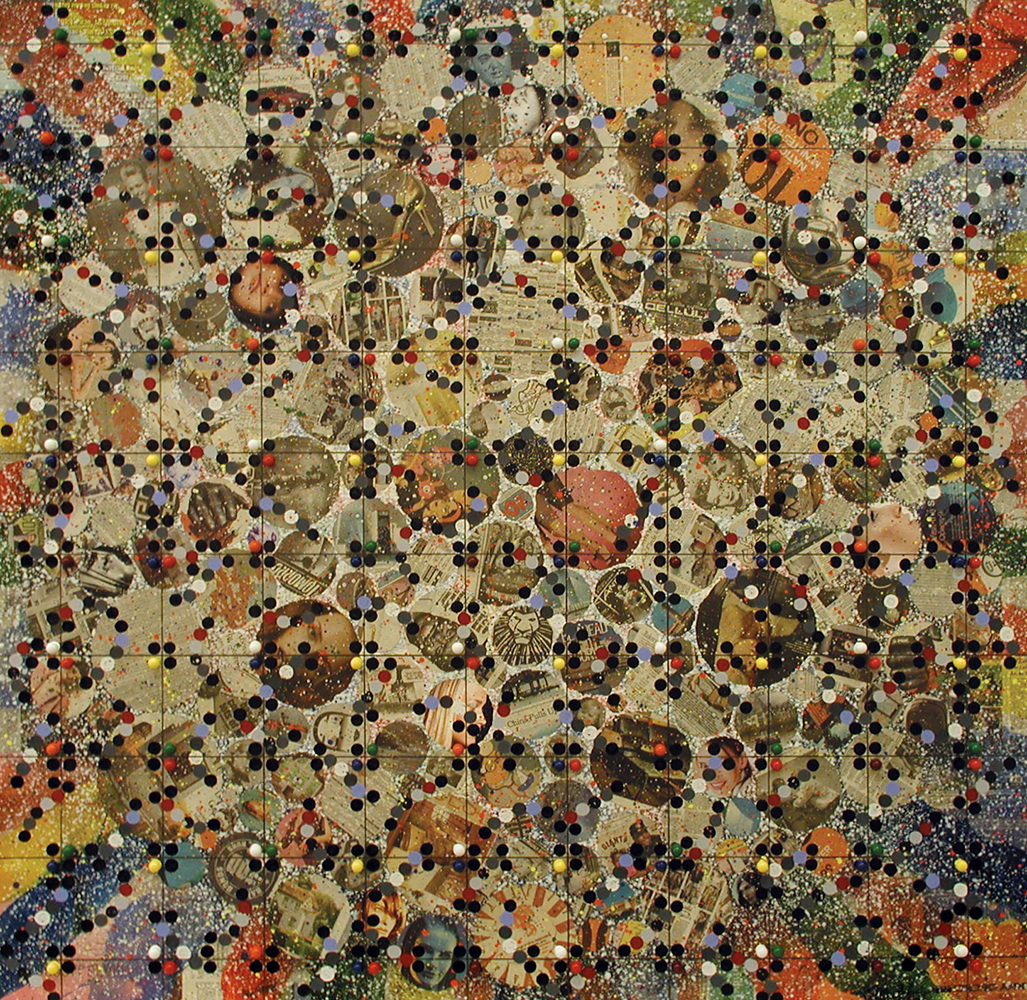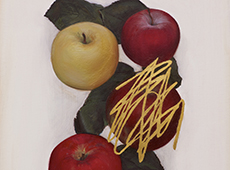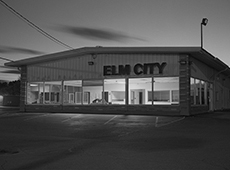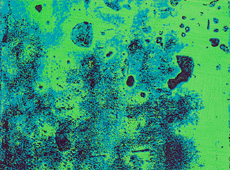I sat on the bed and placed a canvas on the windowsill and made my first painting in America. My earliest paintings in New York, were kind of the extension of what I was doing in Tokyo, but with limited material: one small brush and five tubes of cheap oil paint. From there, over a half century of my journey as an artist in New York began. I never look at art with sense of category—abstract, representational, figurative or conceptual. It is same when I work on a painting. Over the years my painting style has changed many times. I decided very early on that I wasn’t one of those great talents who would defy the history of art or make a significant contribution to it, and I never believed in a signatory style. I knew I could not live without painting, and I just wanted to paint whatever I wanted and in whatever way suited me at the time.
Nobu Fukui, detail,
Photo courtesy Margaret Thatcher Projects.
I came to New York from Japan in March 1963, after a few months stay in Chicago. I found lodging in an apartment on West 88th Street off Broadway, where an elderly Japanese man had a lease. It was a so-called railroad shack, and I rented a middle room. I sat on the bed and placed a canvas on the windowsill and made my first painting in America. My earliest paintings in New York, were kind of the extension of what I was doing in Tokyo, but with limited material: one small brush and five tubes of cheap oil paint. From there, over a half century of my journey as an artist in New York began.
I never look at art with a sense of category—abstract, representational, figurative or conceptual. It is same the when I work on a painting. Over the years my painting style has changed many times. I decided very early on that I wasn’t one of those great talents who would defy the history of art or make a significant contribution to it, and I never believed in a signatory style. I knew I could not live without painting, and I just wanted to paint whatever I wanted and in whatever way suited me at the time. The changes came almost always accidentally, often inspired by my son. For instance, in the summer of 1995—my son was five years old—my son was drawing bugs he collected in Maine and he asked me to copy those drawings. For the following three year, I painted nothing but bugs.
Nobu Fukui,
Photo courtesy Margaret Thatcher Projects.
From the late 1990’s to the early 2000’s, I suffered from terrible insomnia. Instead of tossing and turning in bed, I would get up in the middle of night and draw with sumi-ink on newspaper. I liked the effect of newsprint showing up between the black ink images, and soon I began to paste newspaper on canvas and draw abstract images on it using sumi-ink. At about the same time, my son Isamu brought home some imitation pearls from his school art class. Isamu wanted to make something with those beads, so I took out a canvas and we made a collage painting together. This inspired me to draw grids in pencil on the canvas over the sumi-ink images, then past beads on the four corners and paint those beads with colored enamel. Instead of randomly picking the newspaper I’d use as a ground, I cut out images from the paper that were visually interesting and pasted them on the canvas. I framed those images with white acrylic paint. I titled this painting “OK”—I pick titles from the newspaper pasted on the canvas or folded over its side. I used circular images instead of squares or rectangles, and I tore these by hand. After this painting, I used scissors; then I learned about the compass cutter.
Nobu Fukui,
Photo courtesy Margaret Thatcher Projects.
In 2009, my son saw BBC program called “Planet Earth” online. He loved it so much that he ordered a copy of DVD from England because it hadn’t been released in the US yet, and gave it to me as a Christmas present. The opening scene of the satellite view of the flock of birds covering land and water struck me, and I watched the scene over and over again. I wanted to capture the beauty of the scene on canvas in some way. I happened to have a bag of small imitation pearls, and glued them on the painted newspaper on canvas. That was the beginning of the current series of my paintings.
The process of my current series of paintings: I stretch canvas over panel because I must have a solid background to work against; a lot of pasting, rubbing and gluing goes on. I glue newspaper over canvas using acrylic medium. I paint the background with acrylic paint, sometimes spontaneously, sometimes from a small study on paper. This background is very important to me. I want to have it look like a good finished painting because it sets the tone of the finished work. After the paint is dry, I start pasting circular images usually about one inches apart from each other. I pick images for colors and movement; my choice is strictly visual. I sometimes work on themes, but I don’t have any message or meaning behind my paintings. There are many ways to enjoy looking at art works. If the audience finds symbolism, meanings or messages in my paintings, I think that’s fine; but none of those are intended.
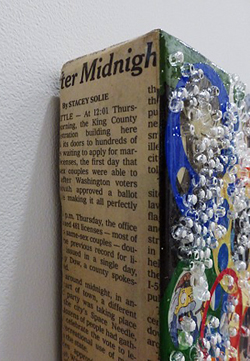
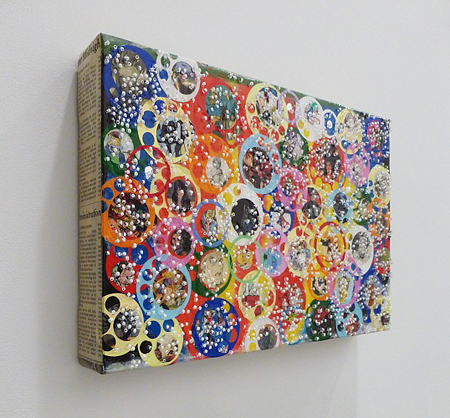
Top: Nobu Fukui, detail,
Now the surface is covered by images, and I begin placing the color discs with holes inside. I normally use 12 to 15 different color discs all cut out from colored paper that I make with acrylic paint. The final step in the process: I place hundreds of beads on the surface, and paint them, usually with white oil paint.
[portfolio_slideshow id=8602 exclude=”8605,8606,8609,8610,8620,8625,8627,8628″]
View more of Nobu Fukui’s work in exhibition at Margaret Thatcher Projects through May 2.
Subscribe to Tilted Arc
If you like this story, please consider subscribing. We are sticklers for privacy.
We will never sell or share your e-mail address.

